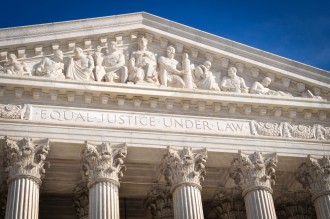
December 5, 2017
Obviousness v. Anticipation: That Which Doesn’t Disclose Still Could Teach
In CRFD Research, Inc., v. Matal, [2016-2198] (December 5, 2017), the Federal Circuit affirmed two Final Written Decisions invaliding claims of U.S. Patent No. 7,191,233 on user-directed transfer of an on-going software-based session from one device to another device, and reversed one Final Written Decision that the claims were not obvious.
What is interesting about this case beyond the fact that a patent owner should have to simultaneously defend three IPR attacks on its patent, the loss of any one of which would be fatal, is the Federal Circuit’s reversal of the Board’s determination that Hulu had not shown the challenged claims to have been obvious. The Federal Circuit said “the Board erred, both in how it performed its obviousness analysis and in the merits of its determination of nonobviousness.”
The Board concluded that the Bates reference did not anticipate certain challenged claims because it did not meet the claim requirement of “transmission of session history after discontinuation.” Hulu complained, and the Federal Circuit agreed that the Board improperly relied on its finding that Bates did not anticipate various asserted claims to support its finding of nonobviousness without considering whether Bates suggests transmission of session history after discontinuation. The Federal Circuit said that “Even if a reference’s teachings are insufficient to find anticipation, that same reference’s teachings may be used to find obviousness.”
Hulu further argued that it would have been obvious, based on Bates, to transmit session history after session discontinuation. Hulu argued the obviousness of the claims based upon Bates, but the Board declined to institute on grounds of redundancy. The Federal Circuit noted that Hulu expressly incorporated this argument as part of other grounds of unpatentability on which the Board instituted trial. The Federal Circuit found that:
To bar Hulu from pressing an argument it raised in a ground the Board found ‘redundant’ and that it expressly incorporated into other proposed grounds of unpatentability on which the Board instituted would not only unfairly prejudice Hulu, but would also raise questions about the propriety of the Board’s redundancy decision.
Of course, even if it does “raise questions about the propriety of the Board’s redundancy decision,” that should not be a concern of the Federal Circuit because, according to Cuozzo, institution decisions are not reviewable. The Federal Circuit went on to find that Bates did in fact sufficiently teach what it did not expressly disclose, and reversed the Board’s determination that the claims were not shown to be obvious.
This case illustrates some of the mischief that arises from a Board’s finding of redundancy. The petitioner is allowed to use the arguments in the non-instituted redundant ground to support its position in the instituted grounds — at least if they are sufficiently “incorporated.” Another problem with redundancy is that the estoppel effect is unclear. The Federal Circuit has indicated that estoppel does not apply to grounds that are not instituted. HP Inc. v. MPHJ Tech. Inv., LLC, 817 F.3d 1339, 1347-48 (Fed. Cir. 2016). If this interpretation applies to grounds denied for redundancy, it means that a patent owner could prevail in the IPR, and later face a challenge based upon the redundant ground — one found by the Board to indistinguishable from the ground on which the patent owner prevailed.




































